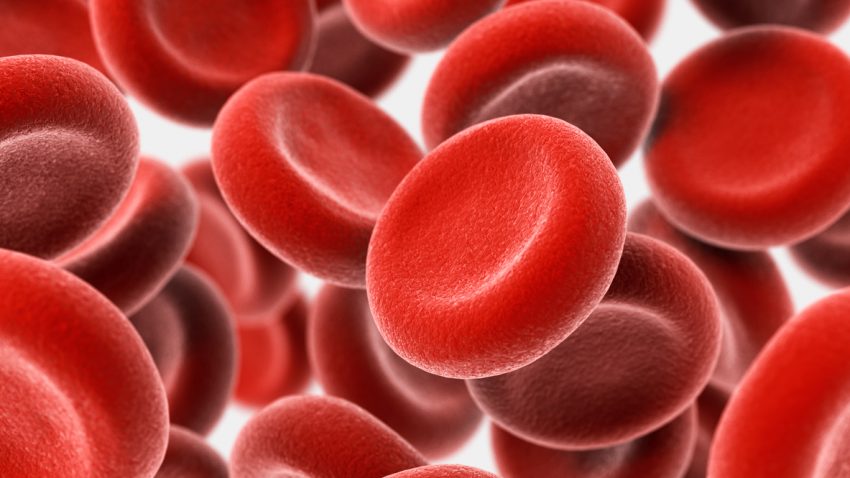

Donating Blood – Your Questions Answered
How You Can Make a Difference by Giving Blood
January is National Blood Donor Month, celebrating the importance of blood and platelet donors in saving lives. With the harsh winter weather meaning that many blood drives have to be canceled due to severe weather conditions, it’s more important than ever to roll up your sleeves and get involved if you can.
In honor of National Blood Donor Month, we’ve put together an article dedicated to blood donation. If you were considering giving blood, hopefully by the end of this piece, you’ll be queuing up at your nearest blood drive!
What is National Blood Donor Month?
National Blood Donor Month was established in a proclamation by then president Richard Nixon on December 31, 1969, when he designated the entirety of January 1970 as National Blood Donor Month. He urged everyone, including the media, medical and health facilities, and the general public, to pay tribute to everyone who donated blood and encouraged more people to sign up as donors.
The event was facilitated through the American Red Cross (ARC) and the American Association of Blood Banks, who hoped to increase the number of registered donors. The ARC is the US branch of the International Federation of Red Cross and Red Crescent Societies and is a humanitarian organization that provides emergency assistance and disaster relief, as well as education, support for military service members and their families, and, of course, the collection, processing and dispensation of blood and related products.
Every January since then has subsequently been devoted to attracting more blood and platelet donations through the harsh winter months, typically one of the hardest times of the year to keep donation levels up, as bad weather and seasonal illness may force donors to stay home. This is why the Red Cross relies on healthy donors to keep their appointments if they possibly can. After all, every drop of blood represents hope and health to a needy patient.[1]
The Facts About Blood
- Every two seconds, someone in America will need a blood transfusion. This adds up to an incredible 36,000 units of red blood cells every day.
- In an emergency, the blood is already waiting before the patient is rushed to hospital.
- As well as red blood cells, almost 7,000 units of platelets and 10,000 units of plasma are required across the US.
- Almost 21 million blood components are transfused annually in America.
- On average, a typical red blood cell transfusion uses 3 pints of blood.
O is the most in demand blood type, since it can be given to all patients regardless of blood type. - AB positive plasma can also be given to all patients, no matter what their blood type. However, as with type O blood, demand is normally higher than supply.
- Approximately 1,000 babies are born with sickle cell disease every year in the US. Sickle cell patients often need numerous blood transfusions throughout their lives.
- Over 1.6 million people are estimated to have been diagnosed with cancer in 2016.[2] A significant proportion of these will need blood, possibly even daily, throughout chemotherapy.
- Someone involved in a car accident may need up to 100 pints of blood.
- Donations of whole blood and red blood cell units in the US total 13.6 million from 6.8 million donors.
- Although approximately 38% of Americans are eligible to donate blood, less than 10% of that number actually do.
- We do not currently have an artificial alternative to blood, which means that when someone donates, it’s not only lifesaving, it’s irreplaceable.[3]
It isn’t just blood that’s important, either. Platelets are also in high demand. As a key clotting component of blood, many cancer patients, burn victims and bone marrow recipients all need platelets and while whole blood can be stored for up to 42 days, platelets can only be kept for five days before they are useless, which means that a regular supply of platelets is doubly crucial.

3D Visualization of Blood Cells
How Do You Become a Blood Donor?
Congratulations! If you’re generally fit and well, then you’re eligible to become a blood donor…
…well, almost. You also have to be at least 17 years old (or 16 with parental consent in most states), and weigh at least 110 pounds. If you’re a high school student or are aged 18 and younger, there are other height and weight requirements you’ll need to meet to become a donor.[4]
Before any blood is drawn, you’ll also undergo a brief examination to make sure your temperature, pulse and blood pressure are all normal and your hemoglobin (also known as hematocrit) will be measured. You’ll be asked to briefly discuss your health history just to make sure that you’re fit and well enough to donate. However, if you’re donating blood for yourself in preparation for surgery (a process called autologous blood donation), this is classed as a medical procedure requiring a written prescription. The rules for donating for your own use are less stringent than for regular donations.
How Frequently Can You Donate Blood?
You can donate whole blood once every 56 days, while platelets, which have a much more limited shelf life, can be given once a week up to a maximum of 24 times in any given twelve month period. In addition, you can donate plasma every 28 days as many as 13 times a year. If you choose to donate more than one type of blood product, this will impact on the number of donations you can make in a year due to the limits on red cell and plasma loss. The American Red Cross will decide whether you’re eligible when you go to donate.
Every 112 days, up to three times a year, you can also donate what’s known as ‘Power Red’. Unlike regular blood donation, a specialist machine separates the red blood cells, returning your plasma and platelets. This means you can donate twice as many red blood cells. The criteria for Power Red Donation are stricter than for regular blood donation, but the ARC encourages those who are eligible to choose this method of donation because red blood cells are most frequently transfused and there’s often a lack of certain blood types. Power Red from Type O donors and those who are Rh-negative are particularly in high demand.[5]
What Happens When You Give Blood?
It’s recommended that you drink plenty of fluids on the day you give blood to help prepare your body and avoid aftereffects. If you can, eat plenty of iron-rich food in the weeks before your donation – yes, even your spinach!
Wear comfortable clothes with sleeves that you can roll up easily and take with you a list of any medications you are taking, including over the counter drugs. You’ll also need ID: your donor card and driver’s license are perfect, but you could also take two other forms of identification. You might like to bring along a friend for moral support. They could always give blood too.
Donating takes about an hour from start to finish, although the actual process of giving blood only lasts around ten minutes.
Step 1
When you arrive, you’ll be signed in and your ID checked. The staff will go over some basic information about donating and you’ll be given some pamphlets to read.
Step 2
You’ll take part in a private, confidential discussion about your medical history and any traveling you’ve done. You’ll also undergo a mini-physical exam to check your temperature, blood pressure and hemoglobin levels. You’ll have to give a small sample of blood for this.
Step 3
Now it’s time to give blood!
The medic will quickly cleanse an area on your arm and insert a new, sterile needle. Most people don’t feel more than a tiny scratch and the needle is in within seconds.
All you need to do now is relax as your blood is drawn into collection bags. This usually takes around 8-10 minutes, although if you’re donating platelets, red cells or plasma, this might take up to 2 hours, so take a good book with you.
Once you’ve given a pint of blood, the hard work’s all done. The needle will be withdrawn and a member of staff will place a small bandage on your arm to cover the site of the donation.
Step 4
Once your donation is complete, you are strongly recommended to have something to eat and drink. Once you’ve waited around 10-15 minutes to make sure you’re okay, you’re free to go and carry on with your day, filled with the satisfaction that comes from knowing that you’re a lifesaver![6]

National Blood Donor Month – Donate Blood in January
I Couldn’t Possibly Give Blood Because…
There are a number of reasons people give for not donating blood, even though they’re eligible. Here’s a few of the most common:
- I could catch something. It’s impossible to contract a disease when you donate blood. All the equipment used is sterile and disposable and needles are never reused.
- They don’t need my blood type. It doesn’t matter what your blood type, they’re all in demand. So whether you have a common or rare blood type, every drop counts.
- They don’t need my blood – plenty of people donate already. Remember when we told you that less than half of the population is eligible to give blood and less than 10% of those people actually come forward? It’s a tiny fraction of the population, yet we all are likely to know someone who needs a transfusion or may even need one ourselves. It doesn’t matter how many people give blood – more is always needed.
- I can’t find a babysitter. If your children are well behaved and don’t require supervision, you’re more than welcome to bring them along. They can stay in the waiting or refreshment area while you donate.
- It’s too much hassle to donate. It usually takes only an hour to give blood from start to finish, including all the paperwork and a tasty snack afterwards. Surely you can find an hour to save a life?
Celebrate National Blood Donor Month and Give Blood in January
Why not celebrate National Blood Donor Month? This is the time of year when blood supplies drop, so when you donate in January, you know that you really are making a positive impact on someone else’s life. If you can’t give blood yourself, there’s still plenty that you can do to make a difference. You could organize a blood drive.[7] If your friends, family or colleagues say that they don’t have time to donate, make it easy for them by bringing the blood bank to them!
You can find your local chapter of the American Red Cross here if you need more information or you want to make an appointment to donate blood. Once you’ve given your pint, tell everyone about it. If you can convince a few of your friends or colleagues to join you, it’ll make such a difference and there’s no feeling like knowing you’ve done something positive and practical to help others.
Sources:
[1] http://www.redcross.org/news/article/Red-Cross-Celebrates-National-Blood-Donor-Month
[2] http://www.cancer.org
[3] http://www.redcrossblood.org/learn-about-blood/blood-facts-and-statistics
[4] http://www.redcrossblood.org/donating-blood/eligibility-requirements
[5] http://www.redcrossblood.org/donating-blood/types-donations/double-red-blood-cells-donation
[6] http://www.redcrossblood.org/donating-blood/donation-process
[7] http://www.redcrossblood.org/hosting-blood-drive

